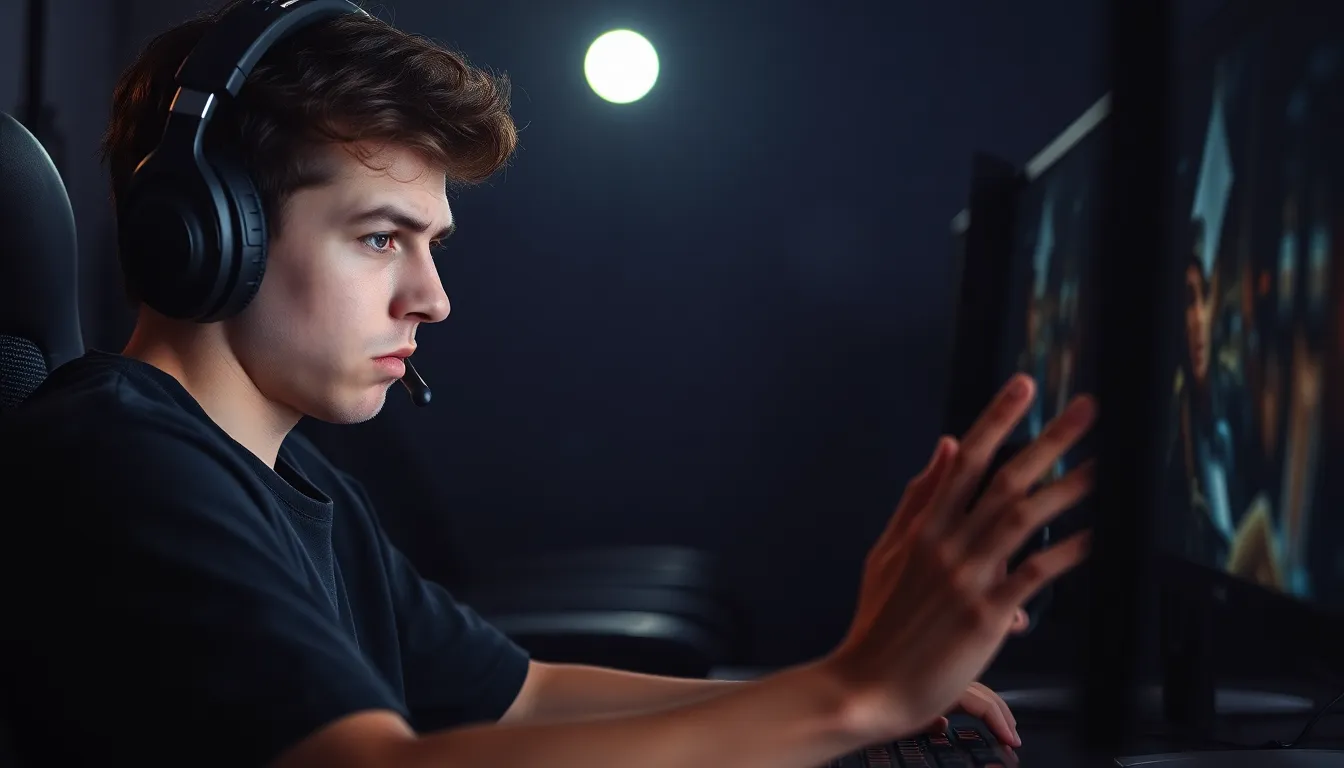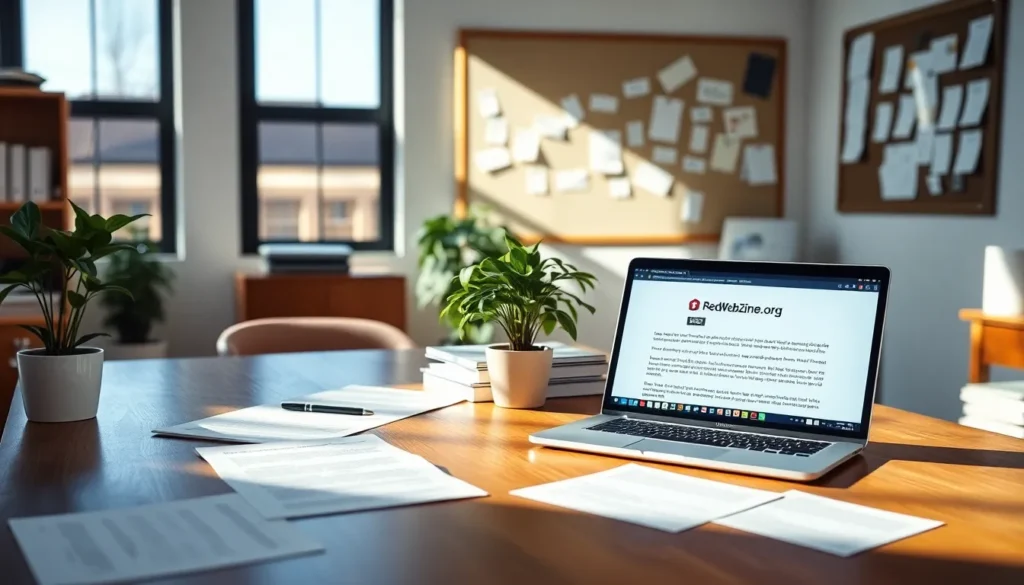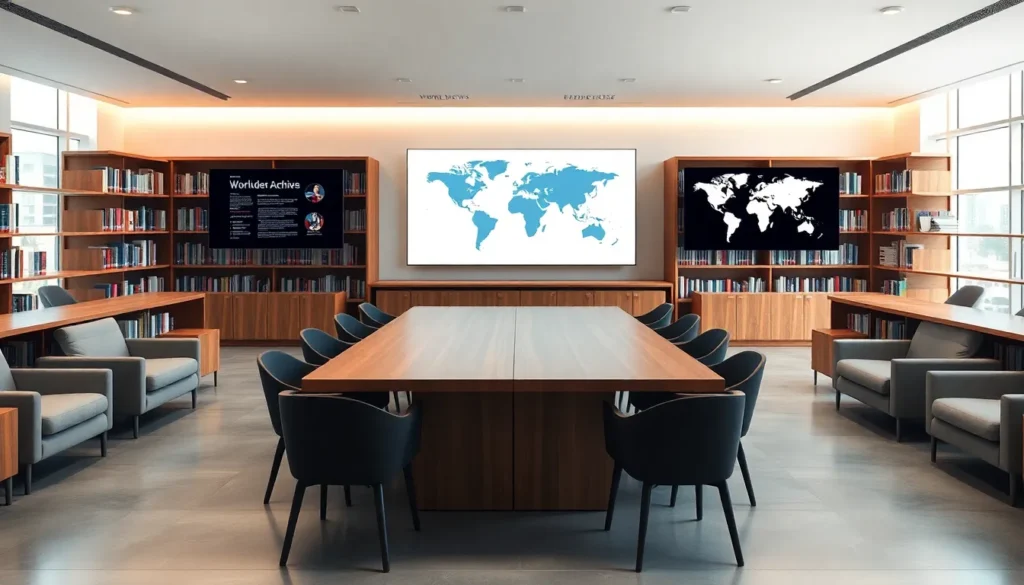Table of Contents
ToggleIn the fast-paced world of online gaming, lag can be a gamer’s worst nightmare. For players of League of Legends, even a split-second delay can mean the difference between victory and defeat. As the competition heats up, understanding lag issues becomes crucial for maintaining peak performance and enjoying the game to its fullest.
Players often face a range of lag-related problems, from high ping to frame drops, which can disrupt gameplay and lead to frustration. Identifying the root causes of these issues is essential for players looking to enhance their gaming experience. By tackling lag head-on, they can reclaim their competitive edge and immerse themselves in the thrilling battles that define League of Legends.
Overview Of Lag Issues League
Lag issues in League of Legends stem from various factors that disrupt gameplay. High ping typically occurs when there’s a delay in data transmission between the player’s device and the game server, resulting in slower response times. Frame drops, another common issue, reduce the smoothness of animations, making it difficult for players to react quickly.
Several causes contribute to these lag issues:
- Poor Internet Connection: An unstable or slow connection often leads to unpredictable gameplay experiences.
- Server Problems: Overloaded or malfunctioning servers can disrupt gameplay, causing lag spikes.
- Hardware Limitations: Inadequate processing power or memory can lead to frame drops and instability.
- Background Applications: Other applications consuming bandwidth or CPU resources can further exacerbate lag.
Identifying the source of lag helps players mitigate its effects. Players can execute several strategies to enhance performance, such as optimizing in-game settings, closing unnecessary applications, and upgrading internet services. By addressing these factors, players can significantly reduce lag issues and improve their overall gaming experience in League of Legends.
Common Causes Of Lag Issues

Lag issues in League of Legends often stem from several common causes that affect gameplay quality. Identifying these factors helps players troubleshoot problems effectively.
Network Connectivity Problems
Network connectivity problems usually stem from unstable or slow internet connections. High ping occurs when there’s a delay between a player’s device and the game server. This delay can result from a variety of factors, including poor Wi-Fi signals, network congestion during peak hours, or issues with the Internet Service Provider (ISP). Players using Wi-Fi instead of wired connections often experience increased lag due to interference from walls, electronic devices, or distance from the router. Testing connection stability and bandwidth speed can assist in determining if the network contributes to lag.
Server Overload
Server overload can occur when too many players connect to a single server, leading to performance degradation. Popular game times, such as evenings or weekends, can strain server capacity, resulting in increased latency and lag. Regional server issues, such as maintenance or unexpected outages, can further exacerbate this problem. Players may notice higher ping and slower game responsiveness during these times. Checking the game’s official status page can confirm if server overload is the cause of lag.
Device Performance
Device performance plays a crucial role in overall gaming experience. Older hardware, insufficient RAM, or a slow processor can limit a player’s ability to run League of Legends smoothly. Frame drops frequently result from running the game on outdated systems or with graphic settings too high for the device’s specifications. Ensuring that the system meets or exceeds the game’s minimum requirements can alleviate many performance-related issues. Updating drivers and closing resource-heavy applications can also help maintain optimal device performance during gameplay.
Impact Of Lag On Gaming Experience
Lag significantly disrupts the gaming experience in League of Legends, leading to player dissatisfaction and adverse gameplay outcomes.
Player Frustration
Players often experience heightened frustration due to lag. Delays in responsiveness can result in missed abilities or failed attacks, causing players to feel disconnected from the game. The tension increases when opponents exploit these delays, making it challenging to maintain composure. Furthermore, lag frequently leads to unpredicted deaths and unfavorable match results, amplifying irritation. Players may find it difficult to enjoy the game, which diminishes overall enthusiasm for play.
Competitive Disadvantage
Lag introduces a clear competitive disadvantage for players. High ping can prevent timely actions, causing players to fall behind their opponents during crucial moments. In fast-paced scenarios, a fraction of a second can dictate victory or defeat. When players encounter frame drops, their ability to aim and react accurately suffers, affecting their performance in ranked matches. Ultimately, lag undermines the skill-based nature of League of Legends, leading to unbalanced gameplay and impacting a player’s standing on the leaderboards.
Solutions To Mitigate Lag Issues
Effective solutions exist to address lag issues in League of Legends. Implementing the following strategies can significantly enhance the gaming experience.
Optimizing Internet Connection
Optimizing the internet connection minimizes lag. Ensure a wired connection to reduce interference; Ethernet cables typically offer more stability than Wi-Fi.
- Test Internet Speed: Use online speed tests to confirm your connection meets the recommended speeds for gaming (at least 3 Mbps for upload and 15 Mbps for download).
- Limit Bandwidth Usage: Close bandwidth-heavy applications like video streaming or large downloads before playing.
- Select Optimal Server: Choose the server closest to your location to lower ping times and improve connection stability.
Game Settings Adjustment
Adjusting in-game settings can also help reduce lag and improve performance within League of Legends.
- Lower Graphics Settings: Reducing texture quality, shadows, and particle effects can help alleviate performance issues on lower-end hardware.
- Disable V-Sync: Turning off vertical synchronization can lead to higher frame rates and smoother gameplay.
- Reduce Frame Rate: Limit the maximum frame rate if the hardware struggles to maintain consistent performance, helping prevent frame drops.
Using Quality Hardware
Using quality hardware directly impacts gaming performance and lag.
- Upgrade RAM: Ensure at least 8 GB of RAM to handle League of Legends efficiently.
- Get a High-Performance GPU: A dedicated graphics card enhances visuals and improves overall gameplay responsiveness.
- Choose a Fast Processor: Invest in a modern multi-core processor to enhance in-game responsiveness and manage background tasks more effectively.
Implementing these solutions can significantly reduce lag, leading to a more enjoyable and competitive experience in League of Legends.
Lag issues in League of Legends can severely impact gameplay and player satisfaction. By understanding the causes of lag and implementing effective solutions, players can enhance their overall experience. Whether it’s optimizing internet connections or upgrading hardware, taking proactive steps can lead to smoother gameplay and improved performance.
Ultimately, addressing lag not only helps maintain a competitive edge but also fosters a more enjoyable gaming environment. Players who invest time in troubleshooting and refining their setup will likely find themselves performing better and feeling more engaged in their matches.







